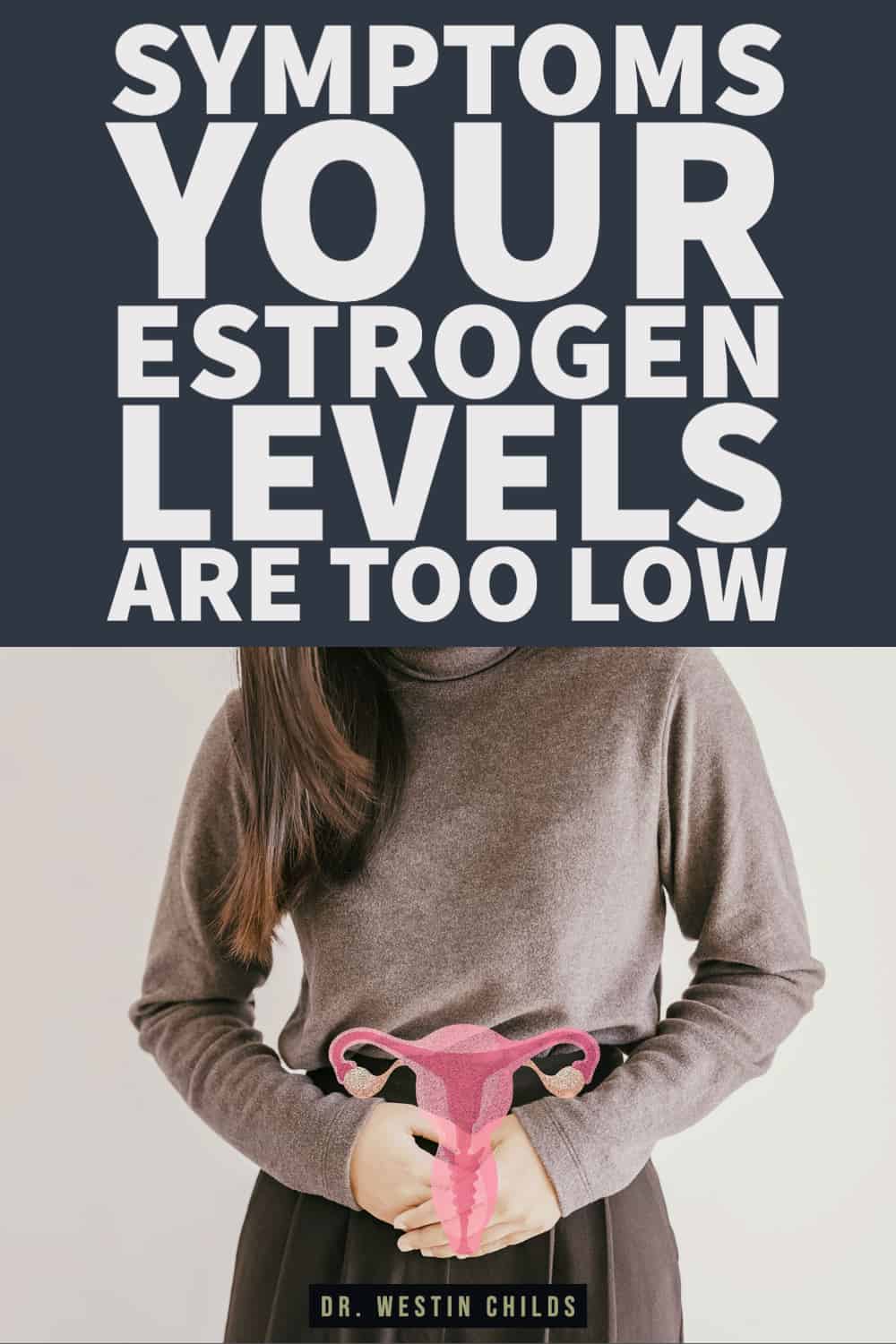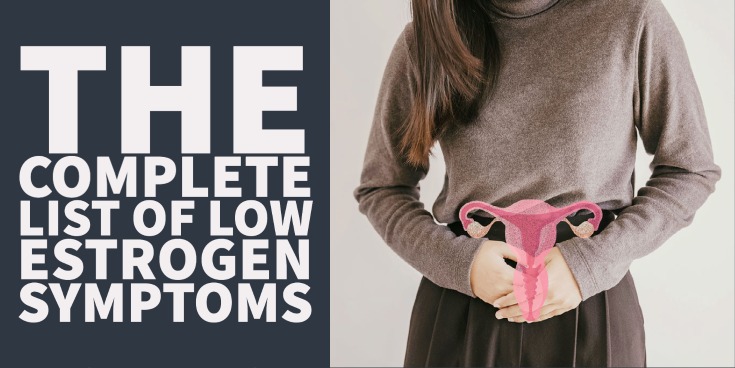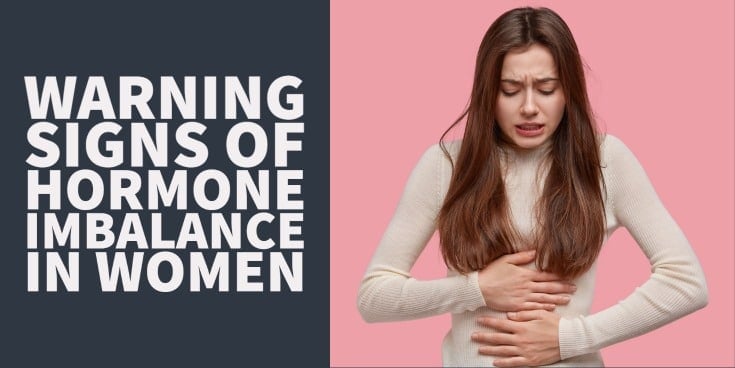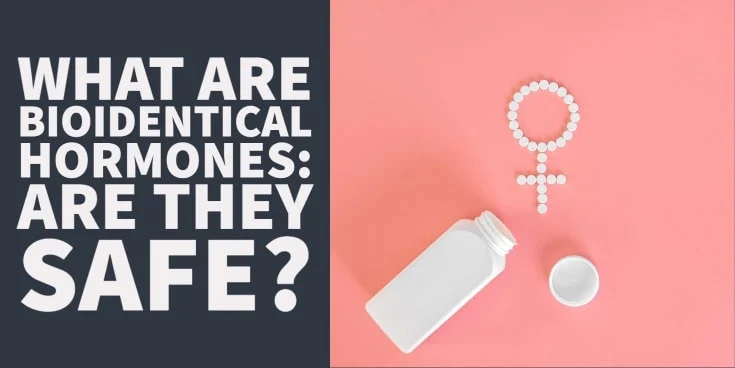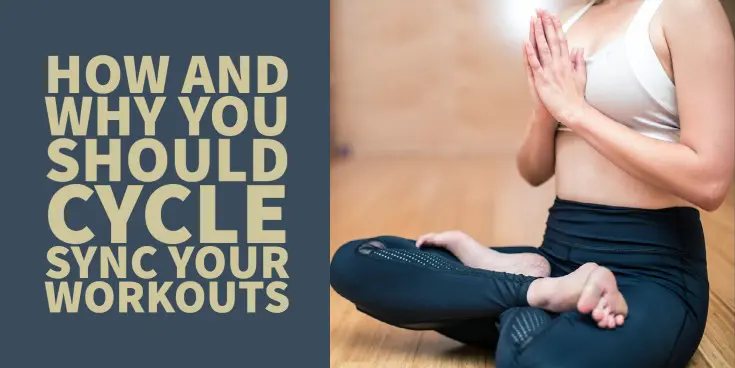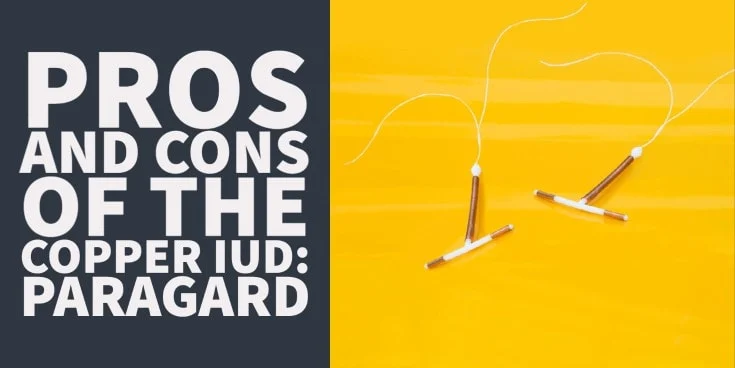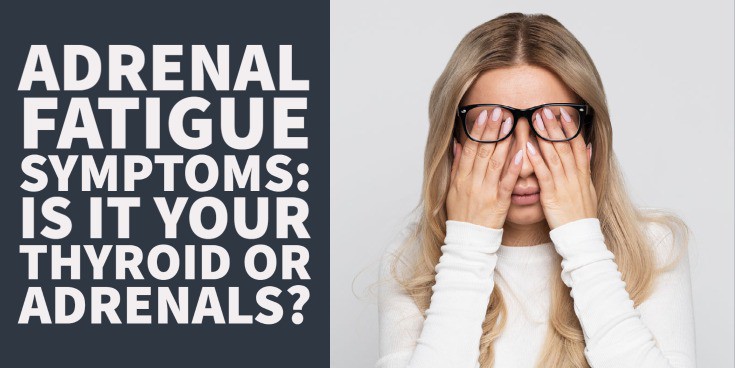Are you worried that your estrogen levels may not be normal?
Are you getting older and experiencing weight gain or other changes that you know are not normal?
Are you younger but having issues with fertility, mood, or menstrual issues?
If so, then estrogen imbalance may be an issue for you.
Learn more about the symptoms associated with low estrogen, how it negatively impacts your body, the difference between high estrogen and low estrogen, how to test for low estrogen, and what to do about it in this post:
The Importance of Estrogen
Estrogen may be the most important sex hormone in the female body.
But why is it so important?
While it is true that both men and women have and need estrogen, it plays a greater and more important role in the female body.
Estrogen helps to regulate the following systems in your body:
- Metabolism and body weight (1)
- Bone density (2)
- Brain function (3)
- Libido and sex drive (4)
- Appetite (5)
- Fertility (6)
But what does this mean for you?
It means that if your estrogen is off (either because it is too high or too low) you will experience problems in these areas and you will present with symptoms.
We will talk more about the symptoms associated with low estrogen in a minute, but for now, we need to focus on what estrogen actually is.
The term “estrogen” is used to refer to a family of estrogenic compounds that have specific functions in the body.
It turns out that a better term to use, when we discuss estrogen, is estradiol.
But don’t let that fool you, there are actually many different types of estrogens in your body including estriol (8) and estrone (9).
All of these estrogens differ in how they impact your body and your cells.
The good news is that it is fairly easy to diagnose and treat low estrogen, provided you take the right approach.
Low Estrogen Symptoms
Part of diagnosing low estrogen is placing emphasis on how you present clinically otherwise known as your symptoms.
Symptoms are a critical component to diagnosing low estrogen because of the variability (day to day and month to month) of estrogen in your serum.
Your symptoms can clue you in on what is happening in your body and they can be used to determine if your treatments are actually working.
You can find a list of symptoms associated with low estrogen below:
- Hot Flashes (10)
- Weight Gain (11)
- Insomnia
- Warm Flushes
- More wrinkles on the skin (12)
- Reduced “Glow” to the skin (13)
- Vaginal Dryness
- Decreased Libido
- Painful intercourse
- Mood swings
- Depression
- Headaches
- Lack of menstrual cycle or irregular menstruation
- Low energy or fatigue
- Increased frequency of urinary tract infections
- Bone loss (14)
- Increased risk of heart disease (15)
Remember:
Women of any age can experience the symptoms of low estrogen.
Estrogen Dominance vs Low Estrogen – What’s the Difference?
It’s important to differentiate low estrogen from high estrogen (otherwise known as estrogen dominance).
It’s important because the majority of women who experience the symptoms associated with low estrogen tend to be older women in menopause and perimenopause.
But this doesn’t mean that younger women cannot experience low estrogen symptoms as well.
Occasionally, women will start looking around on the internet to try and determine which category they fall into.
If you fall into this category, and you aren’t sure what issue you are dealing with, then you can refer to this list of symptoms associated with high estrogen or estrogen dominance.
Younger women tend to experience the symptoms associated with high estrogen much more frequently than low estrogen due to issues such as PCOS, insulin resistance, and exposure to certain chemicals which interfere with estrogen receptors.
The symptoms of high estrogen tend to be the exact opposite when compared to low estrogen, making it easy to differentiate between the two conditions.
What Causes Low Estrogen?
It’s important to remember that all women will eventually suffer from low estrogen as they go through menopause.
Menopause is the normal age-related decline in ovarian function that all women must go through (16).
In addition, all women will notice a slow and steady decline in estrogen as they age (starting at around age 35) and this is also unavoidable.
These important factors cannot be changed and will always be playing some role in your estrogen level.
In most cases, women suffering from low estrogen tend to be older (either going through perimenopause or menopause) but that doesn’t mean that young women can’t experience low estrogen.
Low estrogen in young women is usually the result of some other pathological condition such as excessive exercise, severe dieting, pituitary problems, and so on.
If you are a young woman it is NEVER normal for you to experience low estrogen.
You can find a list of potential causes of low estrogen below:
- Age-related decline from menopause (17) (#1 reason for most women!)
- Severe calorie restriction (from diets)
- Anorexia or other eating disorders (18)
- Excessive exercise (19)
- Pituitary problems (the gland in your brain which produces FSH and LH)
- Lack of sleep (reduction in up to 60% of estradiol) (20)
Testing for Estrogen
In many cases, low estrogen is suspected due to how you present or the symptoms that you are experiencing.
Low estrogen is then confirmed through lab testing.
Unlike testing for high estrogen (which can be difficult), testing for low estrogen is quite simple.
To do this you will want to have your Doctor order the following tests:
- Serum Estradiol – Estradiol is the most potent estrogen in your serum and can be used as a proxy measurement for total estrogen in the body.
- Serum Progesterone – Progesterone should always be evaluated with estradiol because of how they interact with one another. You can learn more about the importance of progesterone and how it influences estradiol here.
- Sex Hormone Binding Globulin – Estrogen (along with thyroid hormone) influences sex hormone binding globulin. Low estrogen is often accompanied by low SHBG. Testing for the SHBG is helpful if your labs look somewhat “normal” but you are experiencing the symptoms of low estrogen.
I’ve provided an example of what low estradiol looks like through lab testing (this is in a postmenopausal woman):

Low estrogen is usually identified as being below the standard reference range, in this case, it is less than 15 pg/mL.
You can see that your estradiol level should never be below 19 (at the absolute lowest) if you are regularly menstruating.
Estradiol, as seen above, has wide and variable ranges depending on the time of the month that you test it.
This range can potentially make identifying low estradiol difficult in some patients.
Why?
Take for instance the follicular phase (referenced above) which shows that during this time frame (the first two weeks of your cycle) your estradiol level should be anywhere between 19 and 144 pg/mL.
What if your body normally produces around 100 pg/mL of estradiol during the follicular phase, but when you test it your result is closer to 30 pg/mL.
Both are technically within the reference range, but one result may be low for your body.
Because of this, it’s always a good idea to have a baseline “normal” level of estrogen (if possible) and to combine your testing with your symptoms.
If you are obviously experiencing abnormal symptoms, but your lab tests say you are “normal”, you may need to re-evaluate your interpretation of those lab results or look into other problems.
Low Estrogen & Weight Gain
Does low estrogen lead to weight gain?
The answer is that yes, it absolutely has the potential to lead to weight gain (though not all women will necessarily experience weight gain).
This is well established in clinical studies which show that women who enter menopause gain on average around 15 pounds (some more and some less).
If you have a history of recent weight gain (within the last 2 years), you consume a lot of fat in your diet, your dietary intake of fiber is low, you consume alcohol regularly, and/or you smoke, then you have a much higher risk of gaining weight.
The best way to avoid this weight gain that is often associated with menopause is to go into menopause as healthily as possible.
That means cleaning up your diet, avoiding gimmicky weight loss and fad diets, reducing or eliminating how much you drink, and increasing your consumption of fruits and veggies.
It’s best to start these therapies years before you even start experiencing the symptoms of perimenopause and menopause!
We don’t know exactly why low estrogen causes weight gain, but it does appear that low estrogen results in changes to how your body metabolizes and uses fat (22).
These changes result in an increase in total body fat and a change in the distribution (where your body stores fat) of how your fat is stored.
Women who enter menopause tend to gain more weight in general and the majority of that weight seems isolated to the stomach area.
Because it’s far more difficult to lose weight once you have it, the best solution is to try and prevent the weight gain from occurring.
Treatment + Hormone Replacement Therapy (& Supplement Options)
There are two main approaches to treating low estrogen in women:
- #1. Bio-Identical Hormone Replacement Therapy – This should be the preferred route (if available to you). HRT refers to the use of exact copies of the hormones that you are deficient in. HRT can be given so that it is safe and effective and, if done correctly, will not increase your risk of breast cancer or other issues (23).
- #2. Supplements – Supplements (such as flaxseed, black cohosh, and evening primrose oil) can help reduce the symptoms associated with low estrogen. These supplements are not as effective as HRT but they can be used in conjunction with HRT or by themselves if necessary.
Bio-identical hormone replacement therapy is the definitive and most effective way to treat low estrogen.
By using hormone replacement therapy (HRT for short) you are supplying your body with the exact same hormones that it is deficient in.
This causes an increase in those hormones and tends to quickly reverse the symptoms associated with their decline.
But be careful when using HRT.
You should look for a Doctor that specializes in hormone balance to ensure that you are getting enough hormones but not too much.
Doctors can alter the amount of estrogen that you receive (dose), the way that you take it (transdermal, by mouth, vaginally, or injection), the type of hormones you take (estradiol vs estriol vs bi-est), and the frequency with which you take it.
All of these variables can be controlled to help provide you with the exact amount that your body needs.
Supplements can be added to HRT to further boost their effectiveness and they can even be used in isolation if you have a contra-indication to HRT.
Women who enter menopause early (especially in the 30s and 40s) should seriously consider the use of HRT due to the long-term negative effects on bone health and cardiovascular disease associated with low estrogen.
HRT can be stopped around the “normal” menopause time frame, or it can be continued beyond that point.
Conclusion
Estrogen is of critical importance to the female body and plays an important role in regulating body weight, mood, heart health, and brain health.
Low estrogen presents with characteristic symptoms which can be identified clinically and then confirmed through standard lab testing.
All women will experience low estrogen due to menopause, but some younger women may also experience pre-mature low estrogen due to various medical conditions.
Identifying, and reversing these conditions if possible, should be taken seriously by physicians and patients due to the potential negative effects that low estrogen has on the female body.
The use of HRT can be used to increase estradiol and progesterone back to normal and youthful levels if women who have low estrogen.
Now I want to hear from you:
Are you suffering from the symptoms of low estrogen?
Do your lab tests confirm that you have low estrogen?
What therapies or treatments have you tried?
Have they worked for you? Why or why not?
Leave your comments below!
